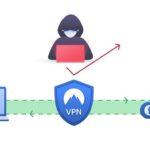With the increasing need for cybersecurity and data protection, companies across various industries are looking to comply with regulatory standards. SOC 2 Type 2 audit is one of such regulatory standards that companies may need to comply with. Understanding what SOC 2 Type 2 audit is, the framework, and the process can help businesses prepare for the audit and avoid compliance issues. In this article, we will delve into the SOC 2 Type 2 audit, its importance, and the steps involved in the audit process.
Are you worried about ransomware attacks and how they could affect your online security? With the constant threat of cyber threats, it’s important to take precautions to protect your digital life.
—————————–Recommendations; Please continue reading below——————————
 ASUS Chromebook C223 11.6″ HD Laptop Shop Now
ASUS Chromebook C223 11.6″ HD Laptop Shop Now
This Asus HD Laptop is an amazon’s choice for ‘chrome computer laptop’ is reviewed by 980+ reviewers that is available at only $249.99. It is ready for productivity and performance while being on the go or travelling, with speedy performance, robust security, and convenience for the user. This laptop has Lightweight 2.2 pound body and with thin and premium metallic finish for a sleek appearance having 11.6 inch HD 1366×768 Anti-Glare Display. The machine is powered by the Intel Celeron N3350 Processor (2M Cache, up to 2.4GHz) for fast and snappy performance including 4 GB DDR3 RAM; 32GB eMMC hard drive; No CD or DVD drive with it. Learn more about this product >>>
What is an SOC 2 Type 2 audit?
SOC 2, which stands for Service Organization Control, is an audit conducted to ensure the security, confidentiality, and privacy of data in a company. SOC 2 Type 2 audit assesses the operational effectiveness of a company’s controls over a period of time, typically six months to a year. The audit measures the company’s compliance with the five Trust Services Criteria (TSC), which are security, availability, processing integrity, confidentiality, and privacy. Click here to learn more about SOC 2 Type 2 certification.
Understanding the SOC 2 framework
The SOC 2 framework comprises five TSC, which serve as the basis of the audit. The security criterion focuses on the protection of information and systems against unauthorized access. The availability criterion measures the availability of a company’s services, systems, and data. The processing integrity criterion assesses the effectiveness, accuracy, completeness, and validity of the processing of information. The confidentiality criterion measures the protection of confidential information against unauthorized access, use, or disclosure. The privacy criterion assesses the privacy of personal information and the effectiveness of controls over the collection, use, retention, and disposal of such data.
The importance of SOC 2 compliance
Compliance with SOC 2 Type 2 audit is crucial for companies that provide services to other businesses. Compliance ensures that the company’s systems and processes meet the highest standards for data privacy and security. SOC 2 compliance is also essential for companies that store, process, or transmit sensitive information, such as financial data, health records, or personally identifiable information. SOC 2 compliance can enhance a company’s reputation and trustworthiness and facilitate business partnerships.
What is included in an SOC 2 audit?
An SOC 2 audit includes an assessment of a company’s policies, procedures, and controls related to the five TSC. The auditor performs a risk assessment to identify potential risks that could impact the company’s compliance with the TSC. The auditor then tests the company’s controls to ensure they are operating effectively to mitigate those risks. The auditor may also perform interviews with employees, review documentation, and analyze data to support their assessment.
The difference between Type 1 and Type 2 audits
A Type 1 SOC 2 audit assesses the design of a company’s controls at a specific point in time. On the other hand, a Type 2 SOC 2 audit assesses the operational effectiveness of the controls over a period of time, typically six months to a year. Type 2 SOC 2 audits are more comprehensive than Type 1 audits since they measure the effectiveness of controls over a more extended period.
How to prepare for an SOC 2 audit
To prepare for an SOC 2 audit, companies should first identify the scope of the audit, including the TSC that applies to their business. Companies should then conduct a risk assessment to identify potential risks that could impact their compliance with the TSC. Companies should also develop and implement policies and procedures to mitigate those risks. It is crucial to review and update policies and procedures regularly and ensure they align with the audit requirements.
PCSN is a SOC 2 Type 2 audited IT Services for Small Business in Texas. They can help you uplift your Business Process in an extra ordinary manner than any non SOC 2 Type 2 audited IT service company.
Steps in the SOC 2 Type 2 audit process
The SOC 2 Type 2 audit follows a standard process involving five stages: scoping, planning, fieldwork, reporting, and follow-up. The auditor first identifies the scope of the audit, including the systems, processes, and controls to be tested. The auditor then plans the audit, including the audit procedures and timelines. In the fieldwork stage, the auditor tests the controls and collects evidence to support their assessment. The auditor then prepares a report summarizing their findings and recommendations. In the follow-up stage, the auditor assesses the company’s remediation efforts to address any deficiencies identified in the audit.
Common SOC 2 audit findings and remediation
Common SOC 2 audit findings include inadequate policies and procedures, lack of employee training, insufficient controls, and ineffective risk management. To address these findings, companies should update their policies and procedures, provide employee training, implement new controls, and improve their risk management processes. Remediation efforts must align with the audit recommendations to ensure compliance with regulatory standards.
Benefits of SOC 2 compliance certification
Achieving SOC 2 compliance certification can enhance a company’s reputation, build customer trust, and facilitate business partnerships. SOC 2 compliance certification demonstrates a company’s commitment to data security and privacy and assures customers that their information is safe and secure. SOC 2 compliance certification also helps companies to identify areas for improvement and strengthen their security posture.
Maintaining SOC 2 compliance over time
Maintaining SOC 2 compliance requires regular review and update of policies and procedures, ongoing employee training, and continuous monitoring of controls. Companies should also conduct regular risk assessments to identify new risks and implement controls to mitigate those risks. Ongoing compliance efforts ensure that companies meet the highest standards for data security and privacy and avoid compliance issues.
Conclusion
SOC 2 Type 2 audit is an essential regulatory standard for companies that store, process, or transmit sensitive information. Understanding the SOC 2 framework, the audit process, and common audit findings can help companies prepare for the audit and avoid compliance issues. Achieving SOC 2 compliance certification can enhance a company’s reputation and build customer trust, while maintaining compliance requires ongoing review, update, and monitoring of controls. SOC 2 compliance is essential for companies that value data security and privacy and want to demonstrate their commitment to those values.
Disclaimer : This is a personal point of view as per the writer’s understanding, please learn more about SOC 2 Type 2 audit via Association of International Certified Professional Accountants. The logo and trademark belongs to Association of International Certified Professional Accountants.
Now loading...






